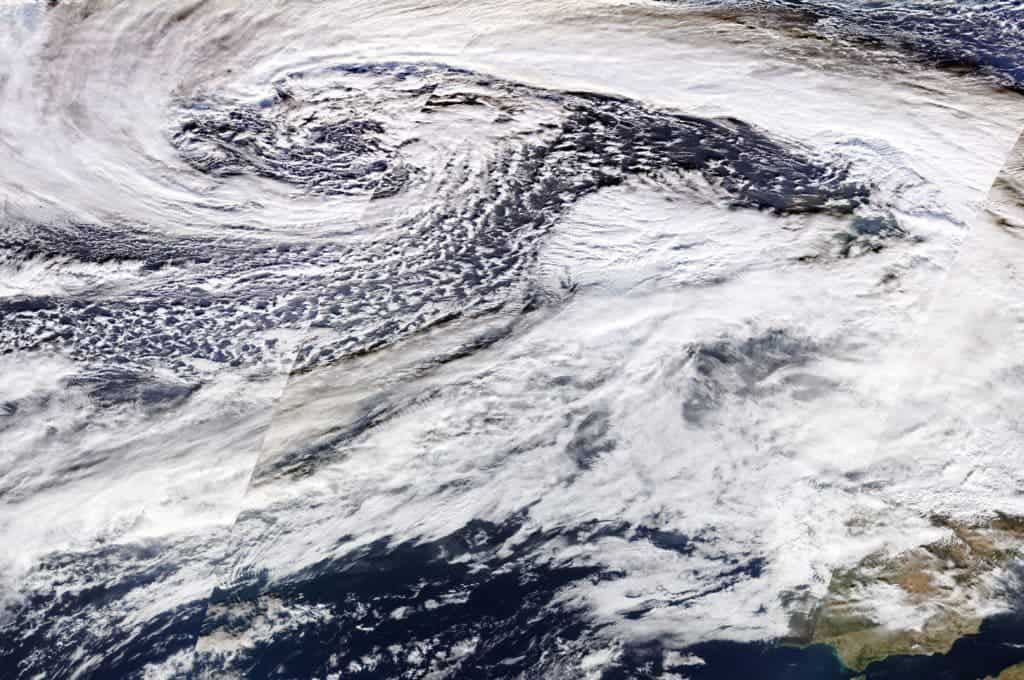As large swaths of the northern hemisphere are dealing with some of the worst heatwaves in history, researchers have just published a study showing that climate change resulting from human activities makes such events twice as likely.

Summers are supposed to be hot — but in many parts of the world, it’s unnaturally and unbearably hot. The UK has witnessed its driest summer in modern history, Japan reported the hottest local temperatures in recorded history, and Scandinavia, known for its frigid temperatures, has been sizzling in temperatures over 30°C (86°F).
It’s hard to draw a direct cause-effect relationship between a complex, global phenomenon and singular heatwaves — but there’s a very good chance the two are connected. In the new study, renowned climatologist Michael Mann and colleagues address this issue, looking at data from seven weather stations in Finland, Denmark, Ireland, the Netherlands, Norway, and Sweden. They chose these stations because they all had digitized records dating back to the early 1900s, unlike most other stations.
They found that, on average, man-induced climate change made heatwaves two times more likely. The results were not uniform and varied by country: in the Netherlands, Ireland, and Denmark, the odds of heatwaves have increased more than twofold.
“We found that for the weather station in the far north, in the Arctic Circle, the current heatwave is just extraordinary – unprecedented in the historical record,” said Geert Jan van Oldenborgh, at the Royal Netherlands Meteorological Institute and also part of World Weather Attribution, who worked on the study.
[panel style=”panel-default” title=”The influence of climate change” footer=””]Assessing the influence of climate change involves complex models and number crunching. Researchers attribute how often extreme events happen at a particular weather station and then compare them with modeled results of climate without the influence of human emissions of greenhouses gases (especially CO2). This way, they work out how likely climate change is to influence extreme weather events.
These studies are called attribution studies.
Attribution studies are much easier to carry out thanks to the increased processing power of modern computers, and scientists often focus on weather stations which have digitized data, which also makes the analysis easier. Such a study used to take several years, but this new analysis was made in little over a week.
Multiple lines of evidence support attribution of recent climate change to human activities, and scientists have high confidence that human activities are to blame. [/panel]
Climate scientists loath to say that an event is “caused” by climate change, but in this case, results are “unambiguous.”
“In many parts of Europe three day heat is not very exceptional and you could argue that it would be better to look at longer,” said Dr. Friederike Otto from the University of Oxford, one of the study’s authors. “But we’ve looked at longer periods and it doesn’t change the result very much.”
This is by no means a singular study — previous efforts have also consistently linked climate change with extreme weather events (both hot and cold). For instance, the heatwave in South Wales, Australia, was made at least 50 times more likely by global warming. The 2017 “Lucifer” heatwave across Europe’s Mediterranean nations was made at least 10 times more likely by climate change, and Hurricane Harvey was 3 times more likely thanks to climate change. Overall, many extreme climate events — and the increasingly hot summers — are linked with man-made climate change. A previous study from last year, also co-authored by Mann, found that all these extreme weather patterns are very likely linked to climate change. Mann actually believes this study may have understated the effects.
We are now in the phase that the effects of climate change are way beyond deniability — it’s time to start acting and tackling this problem — or suffer the consequences.
Journal Reference: Mann et al. “Influence of Anthropogenic Climate Change on Planetary Wave Resonance and Extreme Weather Events.” Sci. Rep. 7, 45242; doi: 10.1038/srep45242 (2017).


